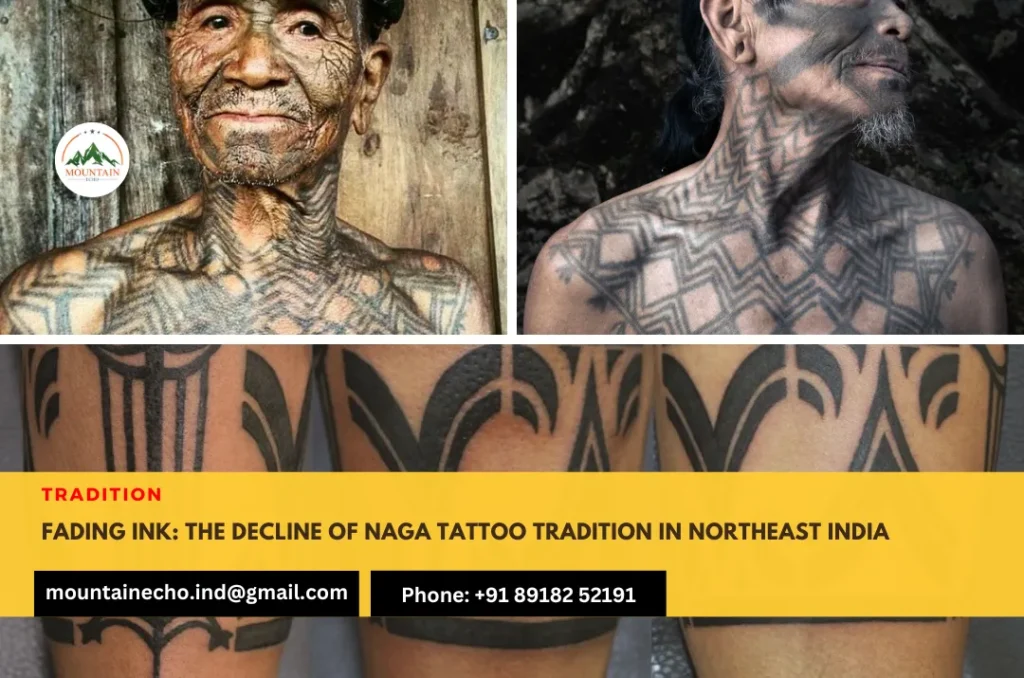Fading Ink: The decline of Naga tattoo tradition in Northeast India
Naga tattoo has become a dying tradition in northeast India. The Naga tribes, comprising around 50 to 60 distinct ethnic groups, have a rich history of tattooing dating back over 5,000 years. Before British expeditions and American Baptist missionaries arrived, Naga tattooing was a sacred art form, serving as a form of communication and storytelling. These tattoos were a significant part of Naga identity and culture, representing their connection to the natural world, beliefs, and way of life.
The Naga tattoos have deep cultural and symbolic meanings, representing various stages of life, adulthood, their animistic connection with nature, and the practice of headhunting. Traditionally, Naga tattoos were created through hand-tapping, a painstaking process involving a needle and hammering tool. The tattooing was done with cane thorns bound to a wooden holder and was hereditary in the female line.
The practice of headhunting and tattooing was outlawed in 1960 by the Indian government. Since then, there has been a sharp decline in Naga traditional tattooing culture. The changes in traditional tattoo practices, with Western motifs replacing indigenous designs is one of the factors for the decline of these ancient traditions.
In the past, warriors returning with skull trophies from battles were adorned with aubergine-colored diamond and lozenge-shaped tattoos, created using red cedar tree ink and palm spikes as tattooing tools. Face tattoos, in particular, were reserved for warriors returning with human heads. However, very few of these former headhunters remain, and their tradition is on the verge of extinction.
There has always been a historical significance of tattoos among the Naga tribe. For example, among the Ao Naga, old women were the tattoo artists, and they primarily tattooed women. Tattoos were considered crucial for a girl’s social standing and they were tattooed before puberty.
The Konyak Nagas used tattooing as a sign of manhood, usually performed by the wife of the village chief. It was associated with headhunting. The Chang Nagas had different tattooing patterns and beliefs, such as protecting against tiger attacks or aiding recognition in the afterlife.
The Wancho Naga women received extensive body tattoos with different designs based on their social status. Tattooing marked significant life stages, from puberty to marriage to pregnancy. Tattooing among the Wancho men was closely related to headhunting and the battlefield. Warriors earned the right to be tattooed, and the level of tattooing represented their prowess.
